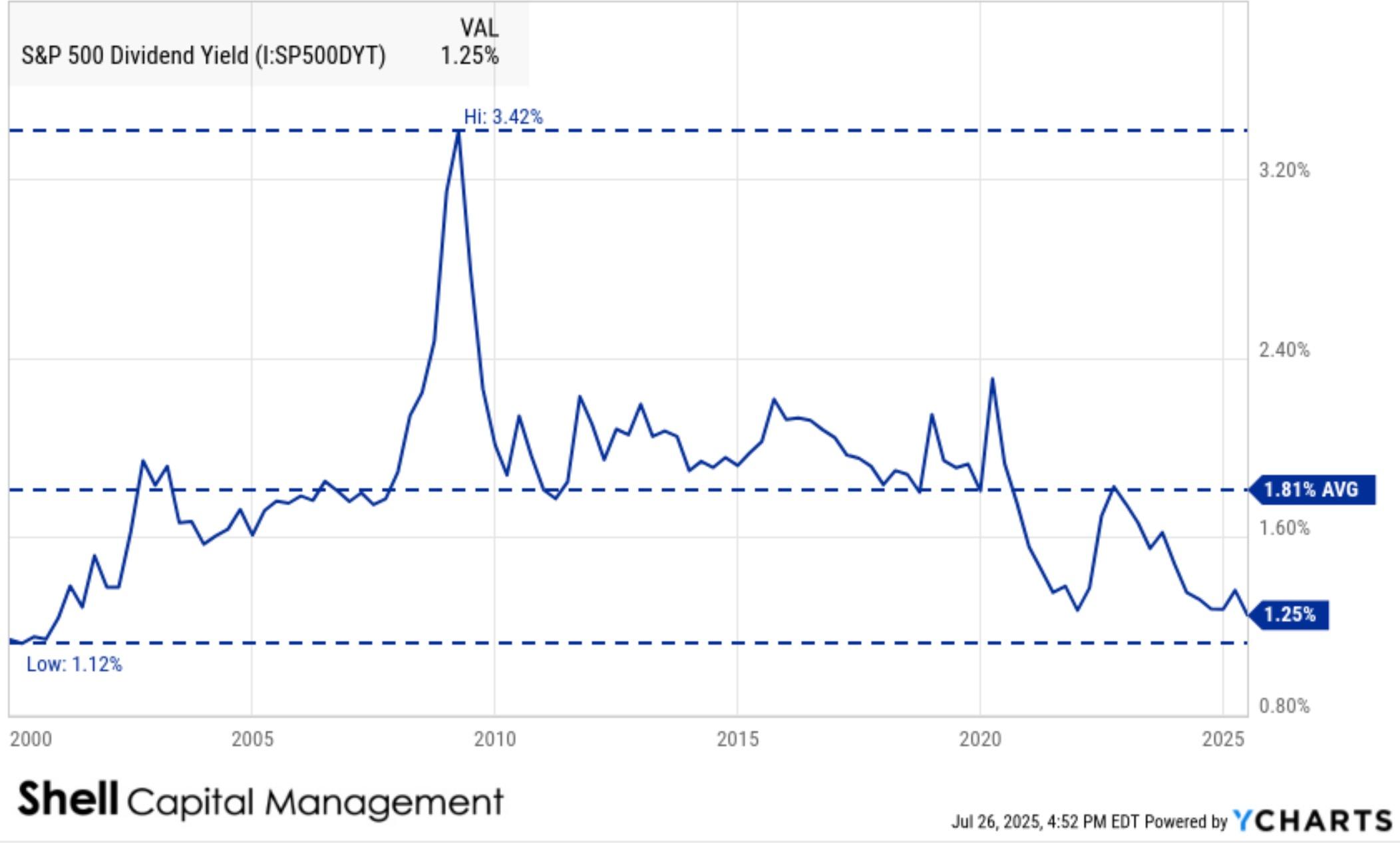
S&P 500 Dividend Yield Hits Multi-Decade Low: What It Means for Asymmetric Investors
The S&P 500 Dividend Yield Has Collapsed—Here’s Why It Matters for Asymmetric Risk/Reward and Asymmetric Returns
The S&P 500 dividend yield has dropped to 1.25%, one of the lowest readings in more than two decades. That’s 31% below its long-term average of 1.81% and just a hair above its historical low of 1.12%.

This may seem like a minor detail—but it’s not. Dividend yield isn’t just about income. It’s a signal of valuation, investor psychology, and risk appetite. And right now, it’s flashing a warning.
What Low Yield Really Tells Us
- Valuations Are Elevated
Dividend yield falls when prices rise faster than dividends. Today’s 1.25% yield suggests investors are paying historically high multiples for future earnings—despite tightening financial conditions and macro uncertainty. - The Income Cushion Is Gone
In past decades, a 2–3% dividend yield helped buffer drawdowns. With today’s 1.25% yield, investors are accepting full equity market risk for a historically low income stream. - Asymmetry Has Flipped Against You
During past market shocks—like 2008 or March 2020—dividend yields spiked. That wasn’t because companies paid more—it was because prices dropped. Those were moments of positive asymmetry: high potential upside, low downside after a flush. Today, we’re on the opposite end: low income, high valuation risk, limited cushion.
The ASYMMETRY® Perspective
At Shell Capital, we don’t accept poor asymmetry. We focus on structuring portfolios where the downside is predefined and limited, and the upside is open-ended and potentially exponential.
That means we actively manage risk, monitor market regimes, and adapt portfolio exposures rather than ride passive beta into valuation extremes. We don’t believe in chasing stretched markets just because “that’s what the index does.”
Instead, we believe in engineered asymmetry—seeking trades and positioning where the reward dramatically outweighs the risk, not the other way around.
The Bottom Line
- S&P 500 dividend yield is near historic lows at 1.25%
- This reflects elevated prices and compressed forward return potential
- Passive investors today are assuming full downside risk for minimal income
- This environment lacks the positive asymmetry we demand in our strategies
If your portfolio relies on the S&P 500 stocks for income or long-term compounding, it's time to reassess. This setup offers low yield, stretched valuations, and little room for error.
That’s not asymmetry. That’s risk without reward.
Shell Capital pursues asymmetric investment returns by predefining risk and managing exposure dynamically across market regimes.
If you're ready to rethink risk, we’re ready to help.
